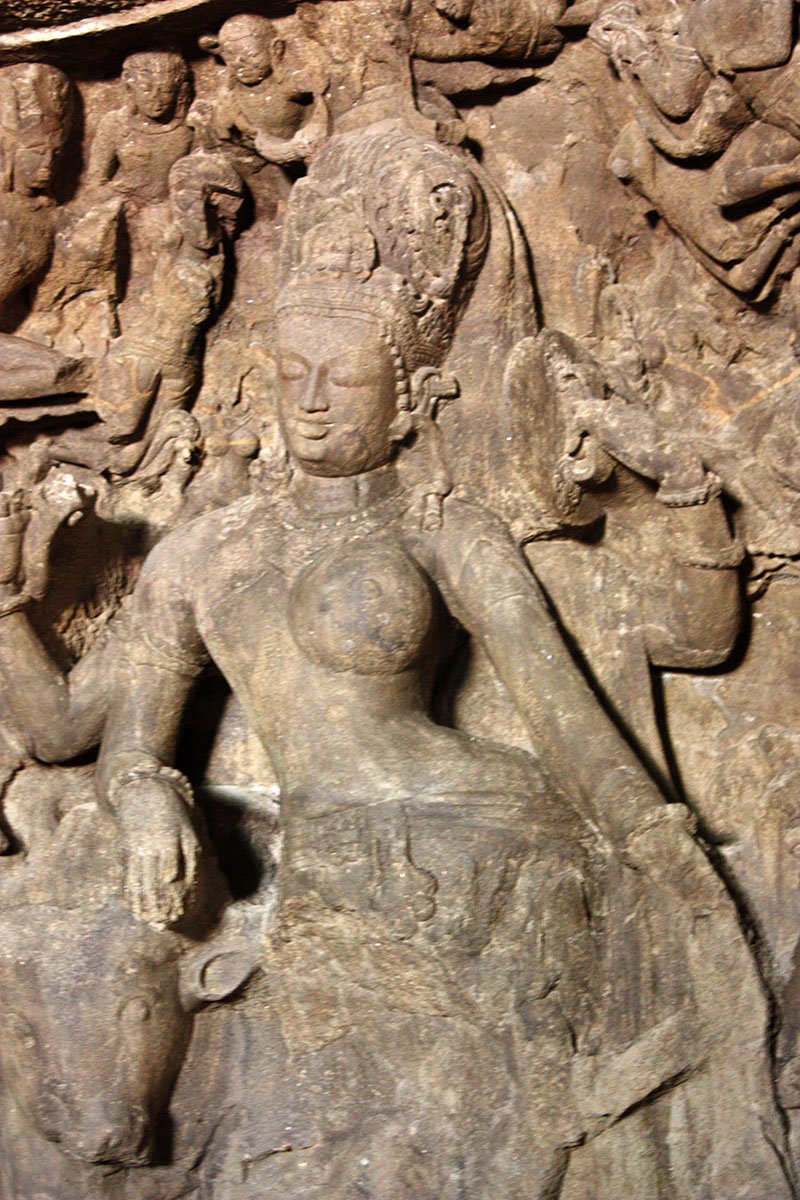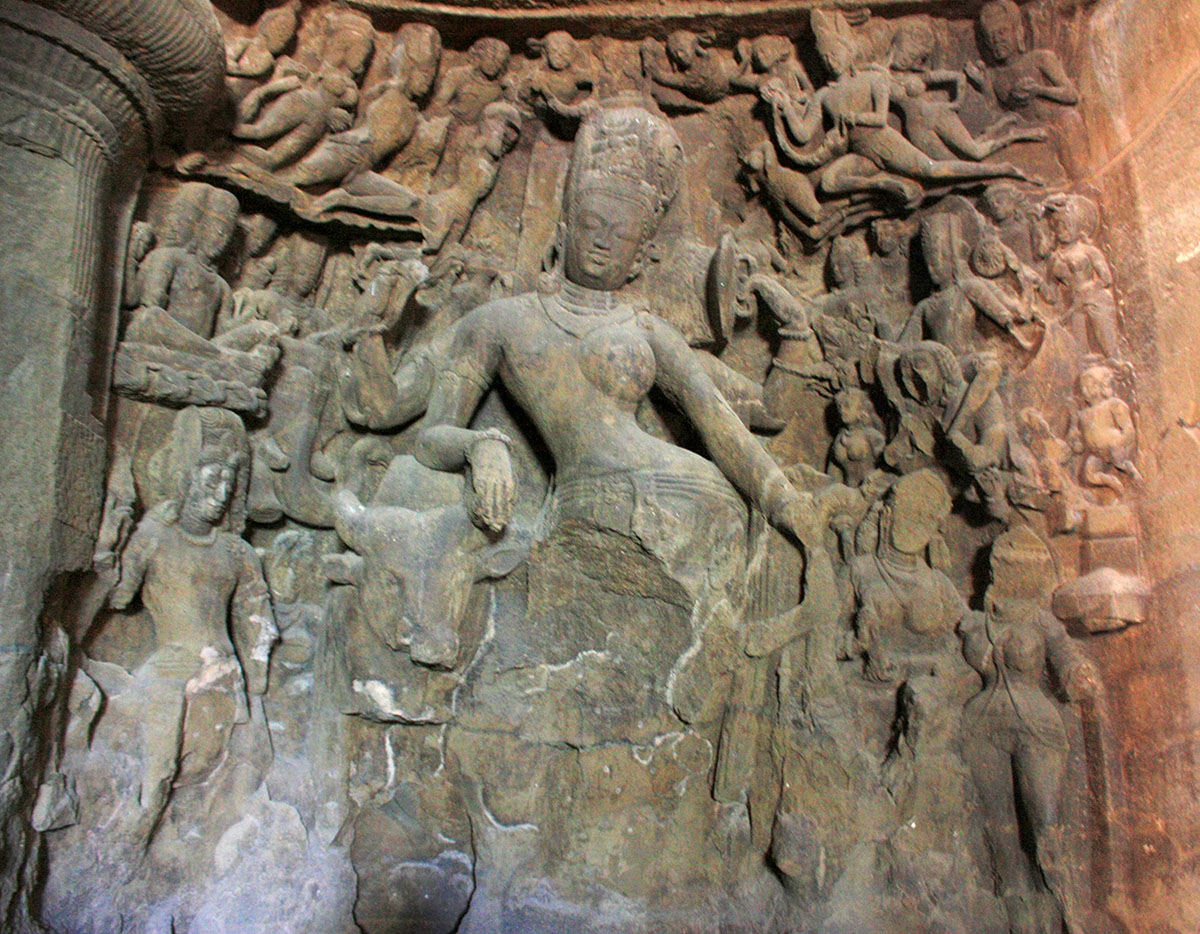A five-metre tall sculpture in Cave 1 of the Elephanta Caves depicting the androgynous form of Shiva and Parvati, the Ardhanarishvara relief is positioned to the east of the Sadashiva (or Trimurti) icon at the far wall of the cave. Other gods and their vahanas are depicted around the main figure of Ardhanarishvara, including his bull mount Nandi. The word Ardhanarishvara translates to “the lord who is half woman”; the deity and is primarily considered to be a form of Shiva in which Parvati features as an energising and balancing force.
The figure is split vertically, with the male half on the right and the female on the left, with some distinction between the details on both sides. The figure is shown leaning on Nandi in the tribhanga or three-bend pose, with the hip, torso and neck bent along different axes. The hip as well as the single left breast are exaggerated, likely intended as legibly feminine features. The figure has four arms: the upper-left holds a mirror, the lower-left holds the remnant of a now-destroyed lotus (possibly held in the katyavalambita mudra), the upper-right grasps a snake and the lower right rests on Nandi’s back. The figure also wears a high headdress with pleats that fall down to the shoulder on the left side, while the right side bears a crescent moon. The lower portion of the figure has suffered extensive damage, possibly as a result of the Portuguese occupation of the site in the sixteenth century.
The composition of the scene positions Ardhanarishvara at the centre, with smaller figures of gods and goddesses turned towards him from different angles, appearing to form a capsule around him while maintaining enough distance to clearly frame the monumental god and Nandi. The smaller figures are arranged in three tiers: the lowermost tier comprises large standing figures of Shiva and Parvati’s son Kartikeya on Ardhanarishvara’s male side and Parvati’s attendants Jaya and Vijaya on the female side. The second tier features Indra, Vishnu and Brahma flying towards Ardhanarishvara on their vahanas Airavata, Garuda and Hamsa, respectively. The topmost tier contains apsaras and devanganas flying towards Ardhanarishvara, seemingly borne on clouds.
The Elephanta Ardhanarishvara deviates from the iconography prescribed in the Matsya Purana and the Shiva Purana, specifically in the absence of the abhaya mudra, the varada mudra and the trident in any of his hands. Due to the damage to the figure’s legs, it is unclear whether the prescribed tiger-skin garment and ithyphallus were included. Additionally, the Puranas describe Ardhanarishvara as a fierce being, but the figure in Elephanta is depicted as serene.








